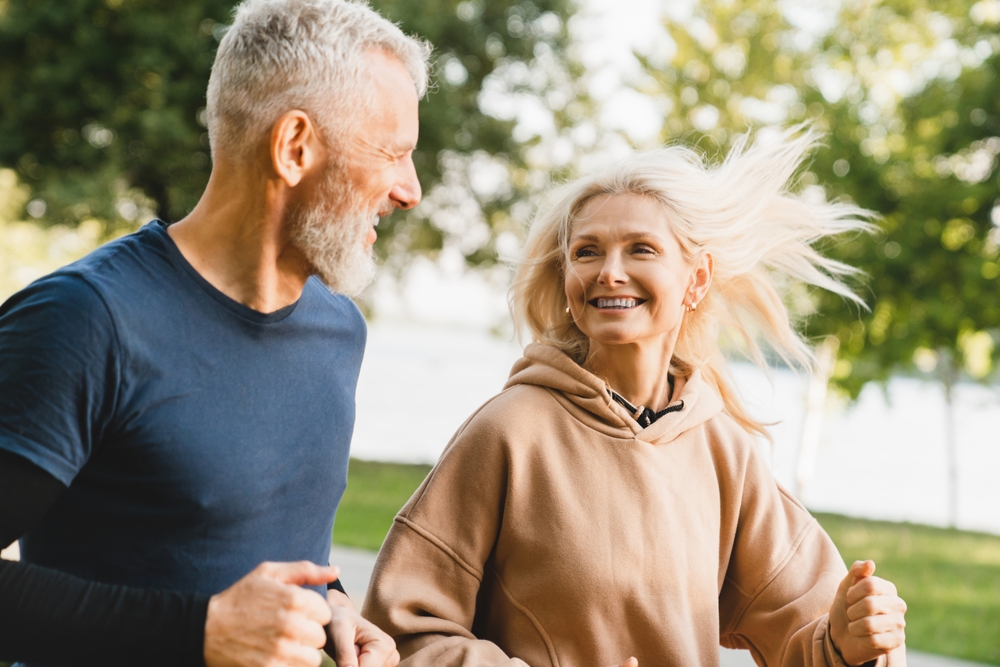Have you ever lost your earbuds? (Or, maybe, accidentally left them in the pocket of a sweatshirt that went through the washer and dryer?) Suddenly, your morning jog is a million times more boring. Your commute or train ride is dreary and dull. And the audio quality of your virtual meetings suffers significantly.
Sometimes, you don’t realize how valuable something is until you’ve lost it (yes, we are not being subtle around here today).
So when you finally find or purchase a working pair of earbuds, you’re grateful. The world is suddenly vibrant again–full of music, podcasts, and crystal clear audio. Earbuds are everywhere these days, and people use them for so much more than just listening to their favorite tunes (though, of course, they do that too).
Unfortunately, in part because they are so easy and so ubiquitous, earbuds present some significant risks for your ears. If you’re wearing these devices all day every day, you could be putting your hearing in jeopardy!
Why Earbuds Are Unique
It used to be that if you wanted high quality sound from a pair of headphones, you’d have to adopt a heavy, cumbersome pair of over-the-ear cans (yes, “cans” is slang for headphones). That’s not necessarily the case anymore. Modern earbuds can provide amazing sound in a tiny space. They were popularized by smartphone manufacturers, who included a shiny new pair of earbuds with basically every smart device sold throughout the 2010’s (funny enough, they’re somewhat rare these days when you purchase a new phone).
In part because these high quality earbuds (with microphones, even) were so easily accessible, they started showing up everywhere. Whether you’re taking calls, listening to music, or watching Netflix, earbuds are one of the primary ways to do that (whether you are on the go or not).
It’s that mixture of convenience, portability, and reliability that makes earbuds useful in a wide variety of contexts. As a result, many consumers use them almost all the time. And that’s become a bit of a problem.
It’s All Vibrations
Here’s the thing: Music, podcasts, voice calls–they’re all essentially the same thing. They’re just waves of moving air molecules. It’s your brain that does all the work of interpreting those vibrations, sorting one type of vibration into the “music” category and another into the “voice” category.
In this pursuit, your brain receives a big assist from your inner ear. There are tiny hairs along your ear that vibrate when exposed to sound. These vibrations are minute–they’re tiny. Your inner ear is what really recognizes these vibrations. At that point, there’s a nerve in your ear that translates those vibrations into electrical impulses–and that’s what allows your brain to make heads or tails of it all.
This is important because it’s not music or drums that causes hearing damage–it’s volume. Which means the risk is the same whether you’re listening to death metal or an NPR podcast.
What Are the Risks of Using Earbuds?
Because of the popularity of earbuds, the risk of hearing damage as a result of loud noise is quite widespread. According to one study, over 1 billion young individuals are at risk of developing hearing loss across the globe.
On an individual level, when you use earbuds at high volume, you increase your risk of:
- Developing sensorineural hearing loss with continued exposure.
- Developing deafness due to sensorineural hearing loss.
- Needing to use a hearing aid in order to communicate with friends and loved ones.
- Experiencing social isolation or cognitive decline due to hearing loss.
- And more.
There’s some evidence to suggest that using earbuds may present greater risks than using regular headphones. The thinking here is that the sound is funneled directly towards the more sensitive parts of your ear. But the jury’s still out on this, and not all audiologists are convinced.
Besides, what’s more important is the volume–and any pair of headphones is capable of delivering dangerous levels of sound.
It’s Not Just Volume–It’s Duration, Too
You might be thinking, well, the solution is easy: I’ll just turn down the volume on earbuds as I binge my new favorite show for 24 episodes straight. Well… that would help. But it might not be the total solution.
The reason is that it’s not just the volume that’s the problem–it’s the duration. Think about it like this: listening at top volume for five minutes will damage your ears. But listening at moderate volume for five hours might also damage your ears.
So here’s how you can be a little safer when you listen:
- Make sure that your device has volume level warnings enabled. These warnings can let you know when your listening volume gets a little too high. (Of course, then it’s up to you to adjust your volume, but it’s better than nothing!)
- Use the 80/90 rule: Listen at 80% volume for no more than 90 minutes. (Want more minutes? Lower the volume.)
- Give yourself plenty of breaks. The more breaks (and the longer duration they are), the better.
- If you don’t want to think about it, you may even be able to change the maximum volume on your smart device.
- As a general rule of thumb, only listen to your media at 40-50% volume.
- Stop listening immediately if you notice ringing in your ears or your ears begin to hurt.
Earbuds specifically and headphones in general can be kind of stressful for your ears. They’re intense! So try to cut your ears some slack. After all, sensorineural hearing loss doesn’t (typically) happen suddenly; it occurs slowly and over time. Which means you may not even notice it happening–at least, not until it’s too late.
Sensorineural Hearing Loss is Irreversible
Noise-Induced Hearing Loss (or NIHL) is typically irreversible. That’s because it’s sensorineural in nature (meaning the cells in your ear become irreversibly damaged due to noise).
The damage builds up slowly over time, and it usually begins as very limited in scope. That can make NIHL hard to detect. You may think your hearing is just fine, all the while it is slowly getting worse and worse.
Unfortunately, NIHL cannot be cured or reversed. However, there are treatments designed to mitigate and minimize some of the most significant impacts of sensorineural hearing loss (the most popular such treatment is a hearing aid). But these treatments are not able to reverse the damage that’s been done.
This Means Prevention is the Best Strategy
That’s why so many hearing specialists place a significant emphasis on prevention. And there are several ways to lower your risk of hearing loss–to practice good prevention–even while listening to your earbuds:
- Switch up the types of headphones you’re wearing. That is, don’t wear earbuds all day everyday. Try using over-the-ear headphones too.
- Use earbuds and headphones that have noise canceling technology. This will mean you won’t have to turn the volume quite so high in order to hear your media clearly.
- Use volume limiting apps on your phone and other devices.
- Limit the amount of damage your ears are experiencing while you are not wearing earbuds. This could mean paying extra attention to the sound of your surroundings or avoiding overly loud situations.
- Wear hearing protection if you’re going to be around loud noises. (Ear plugs, for example, work remarkably well.)
- Make regular visits to your hearing specialist. A qualified hearing specialist will be able to help you get screened and monitor the overall health of your hearing.
Preventing hearing loss–especially NIHL–can help you preserve your sense of hearing for years longer. It can also help make treatments such as hearing aids more effective when you do eventually need them.
So… Are Earbuds the Enemy?
So does all this mean you should find your nearest pair of earbuds and throw them in the garbage? Well, no. (especially not if you have those Apple AirPods–those little gizmos are expensive!)
But it does mean that, if you’re listening to earbuds on a regular basis, you may want to consider changing your approach. These earbuds could be damaging your hearing and you may not even notice it. Being aware of the danger, then, is your best defense against it.
Step one is to moderate the volume and duration of your listening. But step two is to talk to a hearing specialist about the state of your hearing today.
Think you may have damaged your hearing with earbuds? Find a provider near you.



